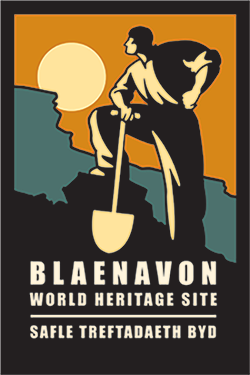The growth of Broad Street
In 1840, a businessman named John Griffith Williams set up Blaenavon’s first covered market. A new road was built, linking the market to the ironworks. Within 30 years, the new road, named Broad Street, was lined with shops. People from far afield (including from overseas) came to set up businesses. Throughout Victorian times, the town centre bustled with activity and supported well over 150 businesses, which provided everything that the community required.
The new Market House at Blaenavon, was opened on Saturday last, which as a substantial and commodious building reflects great credit upon the undertakers of it… the stalls are fitted up in a tasteful manner, and there is a new line of road in progress a little below the Iron Company’s stables to the Market Place… The market was well supplied with excellent meat, vegetables, shoes and earthenware, nearly the whole of the former being cleared off at an early hour.
Hereford Times, 30 May 1840

